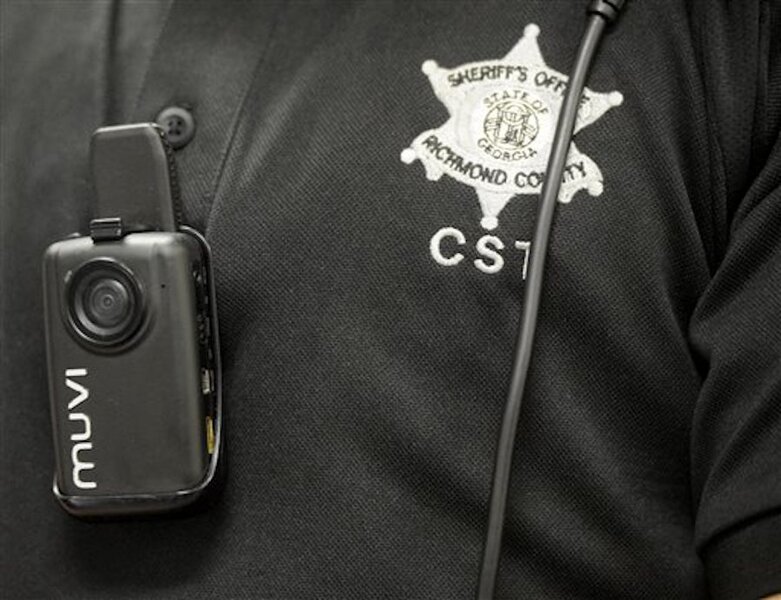Do police body cams work? NYPD issues report.
Loading...
Policing in the US has changed quite a bit over the past year. An increasing focus on the number of people dying in police custody, among other incidents, have led to protests and reforms to promote transparency in encounters between officers and civilians.
In line with those reforms, more police departments have been introducing body cameras. But how have officers responded to them?
The New York Police Department handed 54 participants body cams when it started its pilot program last December, and on Thursday, released a 71-page report reviewing its ups and downs so far.
The report calls for stricter guidelines before the program expands and offers 23 suggestions that can both improve police-community relations and protect the safety of officers and the public, covering issues such as camera activation, protecting the anonymity of certain groups, retention periods, and footage access.
The experts also stress that “any expansion of the NYPD’s program must include community input.”
“You want people to have greater trust in the police,” NYPD Inspector General Philip Eure told the New York Daily News. “You want people to have greater trust in the use of body cameras.”
But it may take officers a while to build that trust with their communities.
A notable issue Mr. Eure found was that officers generally don’t know when it’s appropriate to use the cameras.
“To cut down on the confusion, we recommend in our report that the NYPD broaden its standards for mandatory recording, including all investigative encounters,” Eure said.
While other police departments allow cops to record every encounter or to use “full discretion in determining when to record,” NYPD officers are trained to turn their cameras on only when there’s a reasonable suspicion of a crime happening, during traffic stops, and during incidents where force is used.
But those limits are “too restrictive to fully capture the wide range of police-community encounters,” the report said, and comprehensive footage would benefit police officials “far more” than it would the public, added Ed Mullins, president of the Sergeants Benevolent Association.
Cambridge University published the first scientific study of policing with body cameras last December. Based on its findings, researchers wrote that “evidence capture is just one output of body-worn video, and the technology is perhaps most effective at actually preventing escalation during police-public interactions: whether that’s abusive behavior towards police or unnecessary use-of-force by police.”
Once a camera is on, both parties involved become more self-aware, note the researchers, and that self-awareness is considered the main factor that could prevent violent interactions.
Yet recent footage from officers' body cameras shed light on another advantage.
“As a growing number of police departments are equipping officers with digital body cameras, the so-called blue wall of silence, the unwritten rule that officers never speak ill of one another to outsiders, is being tested perhaps like never before,” writes The Christian Science Monitor’s Patrik Jonsson.
On July 19, a former University of Cincinnati officer stopped an unarmed motorist over a missing front license plate, and within minutes, shot the man to death, claiming he was about to run the officer over.
When the officer first appeared in court, his two colleagues supported his claims. But once officials unveiled footage of the incident, another version became apparent.
Surely, this case doesn’t represent all police interactions. But it shows that body cameras can present “prosecutors the hard evidence they need to override deflections by police officers who go beyond the constitutional protections they enjoy,” writes The Monitor's Jonsson, including “US Supreme Court rulings that give officers wide leeway to make mistakes as they make split-second life-or-death decisions.”





